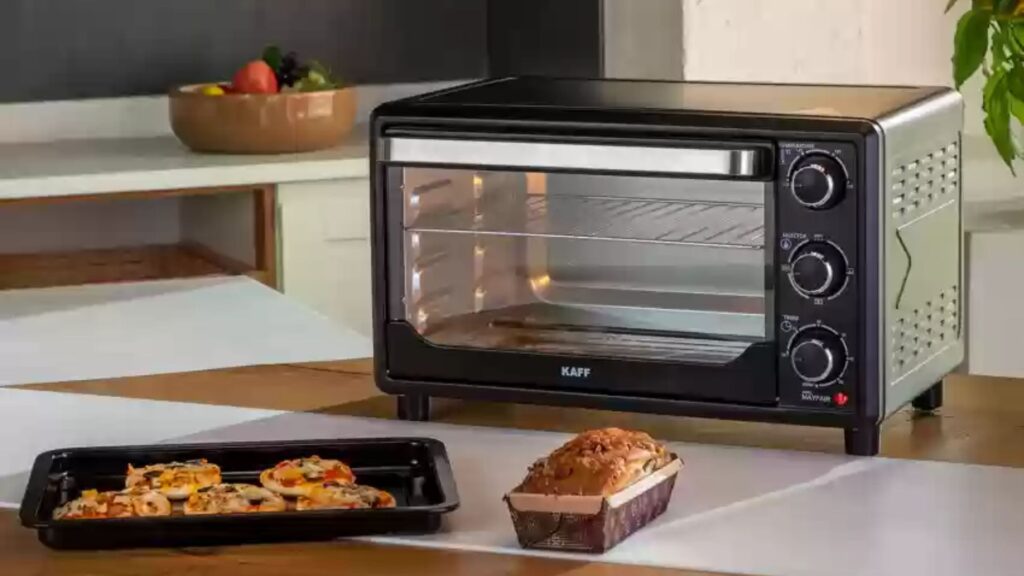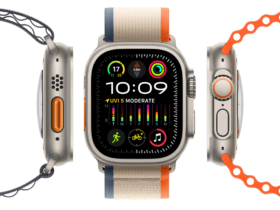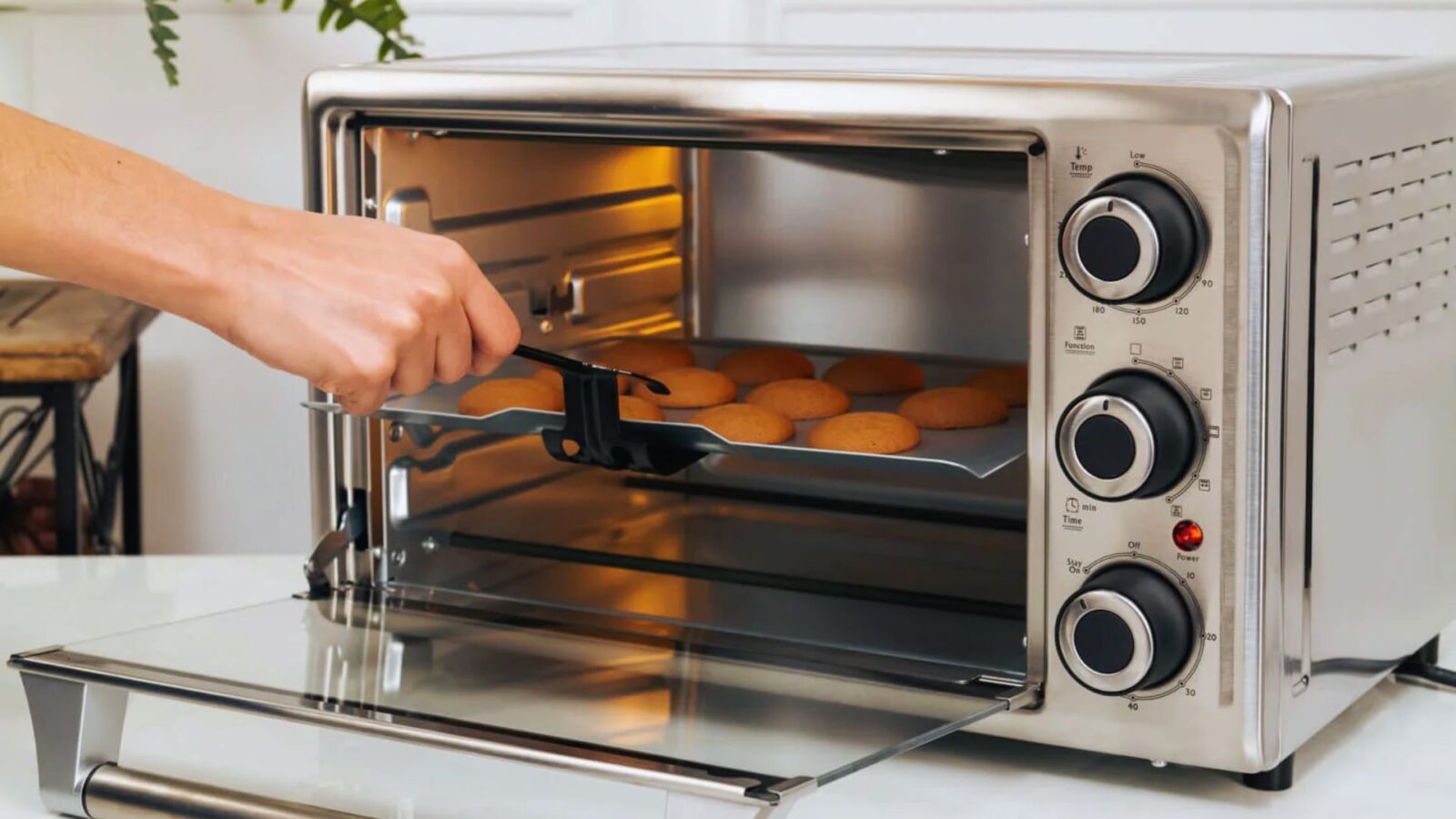When it comes to kitchen appliances, an OTG (Oven, Toaster, Grill) has become a popular choice due to its versatility and compact design. Whether you enjoy baking, grilling, or simply heating leftovers, an OTG offers a lot of flexibility. However, with so many models on the market, choosing the right one can feel overwhelming. This guide will walk you through the key factors you should consider to make an informed decision, ensuring you select the perfect OTG for your needs.
1. Understanding the Basics: What is an OTG?
An OTG is a smaller version of a traditional oven with added toasting and grilling functions. It uses heating coils placed at the top and bottom of the appliance to generate heat, making it ideal for:
- Baking cakes, cookies, and bread
- Grilling vegetables, meat, and sandwiches
- Toasting slices of bread
- Reheating food without making it soggy
Unlike a microwave, OTGs offer more precise cooking results, especially for baking and grilling enthusiasts. However, choosing the right one depends on how you plan to use it.
2. Capacity and Size: What Do You Need?
The capacity of an OTG is measured in liters, which determines the volume of food it can accommodate. Choosing the right size depends on the size of your family and your cooking preferences.
- 10–20 Liters: Suitable for small households or bachelors. This size works well for making small portions like sandwiches, pizzas, or reheating leftovers.
- 20–30 Liters: Ideal for small to medium families (2–4 members). It’s perfect for basic baking, grilling vegetables, and roasting small chickens.
- 30–60 Liters: Best for larger families (4+ members). This size can accommodate larger portions like a whole chicken or multiple baking trays at once, making it ideal for heavy baking or grilling needs.
Pro Tip: If you regularly host gatherings or enjoy baking large batches, go for an OTG with a higher capacity.

3. Power Consumption: Striking the Right Balance
OTG power is measured in watts, and it plays a crucial role in cooking time and electricity consumption.
- 800–1200 Watts: Suitable for small OTGs (10–20 liters) used for light cooking and toasting.
- 1500–2000 Watts: Common for medium-sized OTGs (20–30 liters) used for frequent baking or grilling.
- 2000+ Watts: Found in large OTGs (30+ liters), which are ideal for intensive cooking.
Higher wattage means faster cooking, but it also means more power consumption. Choose an OTG that aligns with your cooking frequency and electricity budget.
4. Features to Look Out For: Making Cooking Easier
Modern OTGs come with various features to enhance usability. Here are some key features to keep in mind:
a) Temperature Control
- Allows you to set precise temperatures for different types of dishes.
- Look for an OTG that offers a range between 100°C and 250°C to ensure versatility.
b) Timer and Auto Shut-off
- A timer ensures that your food doesn’t overcook.
- An auto shut-off feature is especially useful for busy users, turning off the OTG once the cooking is complete.
c) Cooking Modes (Top/Bottom/Combined Heating)
- Many OTGs offer modes where only the top or bottom coil is activated, or both are used simultaneously.
- This is essential for baking (bottom coil), grilling (top coil), or roasting (both coils).
d) Convection Function (Optional)
- Some OTGs come with a fan for convection cooking, which circulates hot air evenly. This ensures faster cooking and is ideal for baking.
e) Rotisserie Feature
- If you enjoy roasting meat, look for an OTG with a rotisserie option. This function rotates the meat, ensuring even cooking.
5. Build Quality and Design: Durability Matters
When choosing an OTG, consider both its build quality and design for longevity and convenience.
a) Material
- Stainless steel interiors are more durable and resistant to rust than aluminum interiors.
- Non-stick interiors make cleaning easier, which is a bonus if you use the OTG frequently.
b) Door Design
- OTGs usually have drop-down doors. Ensure that the door is sturdy and opens smoothly without wobbling.
- Some models offer double-glass doors to improve heat retention and safety.
c) Accessories
Most OTGs come with a basic set of accessories, including:
- Baking tray: For cakes, cookies, and roasting vegetables.
- Wire rack: For grilling and toasting.
- Skewer rods: For kebabs or rotisserie cooking (in advanced models). Ensure the model you choose provides these accessories to meet your cooking needs.
6. Ease of Cleaning and Maintenance
Keeping your OTG clean will prolong its life and ensure better cooking performance. Here are some cleaning-related features to consider:
- Removable crumb tray: Helps collect crumbs and makes cleaning easier.
- Non-stick interiors: Prevent food from sticking to the surface, requiring minimal scrubbing.
- Removable racks and trays: Opt for an OTG where the accessories are dishwasher-safe or easy to clean.
7. Brand and Warranty: Peace of Mind
When investing in an OTG, it’s essential to choose a reliable brand that offers good customer service. Some trusted OTG brands include:
- Bajaj
- Morphy Richards
- Philips
- Prestige
- LG
Check for models that offer at least 1–2 years of warranty on the product and heating elements. This ensures that you’re covered in case of any defects or malfunctions.

8. Budget: Getting Value for Your Money
OTGs come in a wide range of prices. Here’s a rough idea of what you can expect:
- Below ₹3000: Entry-level OTGs with basic functions. Good for occasional toasting or heating.
- ₹3000–₹7000: Mid-range models offering better capacity and additional features like timers and multiple modes.
- ₹7000 and above: High-end OTGs with advanced features like convection, rotisserie, and touch controls.
Your budget should reflect your cooking needs. If you only plan to use it occasionally, a mid-range model might be sufficient. For serious bakers and home chefs, it’s worth investing in a higher-end OTG.
9. OTG vs. Microwave Oven: Which One Should You Choose?
Some buyers are often confused between an OTG and a microwave oven. Here’s a quick comparison to help you decide:
| Feature | OTG | Microwave Oven |
| Heating Mechanism | Heating coils | Microwave radiation |
| Best For | Baking, grilling, toasting | Reheating, defrosting |
| Cooking Time | Slower | Faster |
| Cost | Generally more affordable | Slightly more expensive |
| Size | Compact to large | Medium to large |
If your primary need is baking and grilling, an OTG is a better choice. However, if reheating and quick cooking are your priorities, a microwave might be more suitable.
Final Thoughts
Choosing the right OTG involves understanding your cooking habits, family size, and budget. Here’s a quick recap of the key points to help you make an informed decision:
- Capacity: Pick a size that matches your cooking needs and family size.
- Power Consumption: Choose an OTG with appropriate wattage based on usage frequency.
- Features: Look for useful features like temperature control, timer, convection, and rotisserie.
- Build Quality: Opt for stainless steel interiors and durable accessories.
- Ease of Cleaning: Non-stick interiors and removable trays make cleaning hassle-free.
- Warranty: Go with a reliable brand that offers a good warranty.
By considering these factors, you’ll be able to find an OTG that perfectly aligns with your cooking preferences and lifestyle. Happy cooking! Whether you’re a beginner baker or an experienced home chef, the right OTG can open up a world of culinary possibilities. With this guide, you’re now ready to explore your options and make a smart purchase.



















Leave a Reply